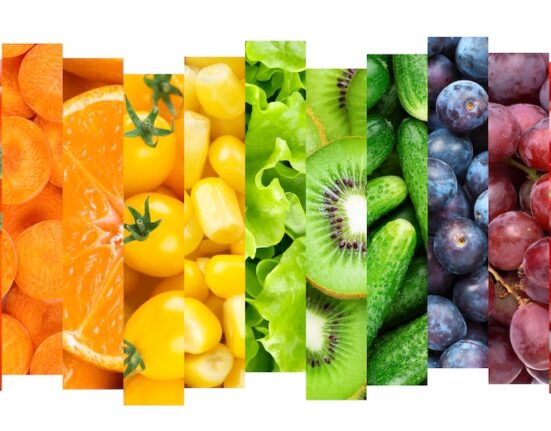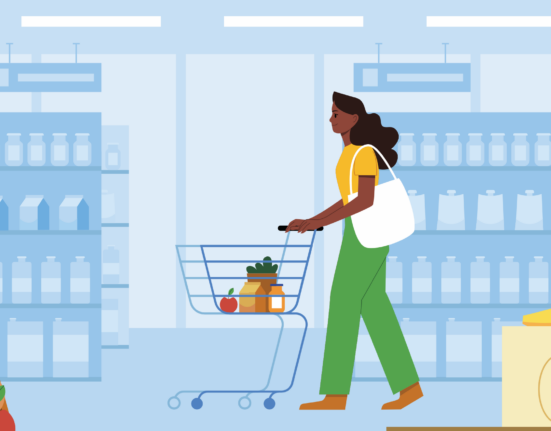In a world where dietary habits are shifting and populations are both growing and aging, the importance of integrating fruits and vegetables into daily diets is becoming increasingly paramount. Governments around the globe are actively promoting these dietary inclusions, recognizing their critical role in public health. This global recognition has led to an industry producing vast quantities of fresh fruit annually, a testament to the surging demand for these nutritional powerhouses.
The growing appetite for fresh produce is coupled with an insistence on not only taste and quality but also uniformity and visual appeal. Supermarkets, in their bid to attract consumers, prioritize offering aesthetically perfect produce. Yet, the pursuit of perfection is fraught with challenges. The United Nations estimates that 14% of food produced is lost between harvest and retail, and 17% of total production is wasted in households (11%), food services (5%), and retail (2%). This waste underscores a critical need for innovative solutions to maximize resource use.
The pressure to minimize food waste has spurred a significant transformation in the fruit processing industry. In response to this imperative, the market for products from processing plants has experienced significant growth. Companies are increasingly adopting sustainable practices, driven by an awareness of food waste and the urgent need to develop alternative processing methods and new products from discarded fruit.
In the United States, where a staggering 40% of food is estimated to be wasted, legislative efforts to reduce food waste have seen significant advancements as of May 2024. The Biden-Harris Administration introduced a comprehensive National Strategy for Reducing Food Loss and Waste, aiming to cut food waste by 50% by 2030. This strategy, involving the United States Department of Agriculture (USDA), Environmental Protection Agency (EPA), Food and Drug Administration (FDA), and the U.S. Agency for International Development (USAID), focuses on preventing food loss and waste, increasing recycling rates for organic waste, and supporting policies that incentivize these practices. Key actions include investing in consumer education, developing new packaging technologies, and enhancing coordination among federal agencies and private sectors.
The Farm Bill, reauthorized every five years—nowadays at a cost of over $400 billion—did not include any legislation related to food waste until 2018. However, the 2024 Farm Bill looks set to include key elements aimed at food waste reduction, advocating for the establishment of a dedicated office within the USDA to manage food waste initiatives, increasing funding for food recovery infrastructure, and standardizing food date labels. This is expected to greatly help meet federal goals to achieve a 50% reduction in food waste by 2030.
Global Efforts
In this context of legislative efforts and strategic initiatives, global trends in food waste reduction are becoming increasingly relevant. Researchers at the Vineland Research and Innovation Centre, based in Ontario, Canada, have identified significant opportunities in the waste streams and by-products of globally produced fruits and vegetables, including potatoes, apples, tomatoes, cucumbers, onions and carrots.
The processing of fruits and vegetables generates substantial waste, such as cores, peels and pomace, which are rich in valuable nutritional and functional compounds. These by-products offer potential for food manufacturers through processes like drying, milling and extrusion.
For instance, apple pomace can be repurposed as a thickener and fiber source, while natural apple enzymes can act as gelling agents in sausage or bread production. Apples are also abundant in pectin, which is used as a thickener in fruit fillings.
The report highlighted that large processing facilities generate millions of pounds of by-products annually. Finding new value-added uses for these by-products could provide significant economic and environmental benefits, presenting a global opportunity to utilize crop waste more effectively and sustainably.
Graciela Urrutia, manager of Transforma Alimentos, an initiative by Chile’s economic development agency, Corfo—and supported by the Ministry of Agriculture to promote the sustainable growth of the country’s food industry—explains that innovation in processed fruits encompasses a wide range of technologies. These technologies allow for the transformation of fruits that do not meet fresh export quality standards into attractive, healthy, convenient and sustainable products aligned with market trends, consumer preferences, and changing lifestyles.
“Utilizing these fruit discards creates opportunities to diversify company product offerings, allowing them to reach new markets. The general trend in processing technologies is to preserve product quality and nutrients, using natural ingredients and avoiding preservatives and chemical additives. Nowadays there are value-added products such as functional foods, nutritional ingredients, supplements, and even beauty and personal care products,” says Urrutia.
The contribution of science and academia has been fundamental to these advancements. With more than 12 years of experience in global biotechnology, Dr. Cassamo U. Mussagy developed a research line resulting in the creation of an intelligent bioplastic from unused or discarded grapes. This bioplastic can be used in packaging for various food industry products.
“The pigments in purple grapes have the unique property that their anthocyanins (a group of antioxidants) change color depending on pH and temperature changes. We use this feature as a biosensor for biodegradable plastic, which degrades in just weeks and is used for preserving animal protein. When the protein starts to spoil, it releases gasses that cause the pigment in the plastic to change color, indicating freshness to the consumer,” explains Mussagy, a researcher at the Sustainable Bioprocess Development Laboratory (LABISOST) at the Pontifical Catholic University of Valparaíso.
Globally, the trend of reducing and repurposing food waste is growing, though widespread adoption still faces significant challenges. In Spain, the topic of the food waste law, which is not yet in effect, has been gaining attention. The country’s government has approved a draft bill that focuses on prevention and information, and establishes the human consumption of food as a priority. But according to Virginia Fradejas, a chemical engineer, creator of Kamarere—a Castilla y Leon based manufacturer of dehydrated and powdered fruits and vegetables that can be used as seasonings—and president of the country’s Zero Waste association, a non-profit, the issue is not fully understood by the public. She says there is a lack of awareness regarding the standards fruit must meet to be used in new products.
“People don’t really know what is being crushed or dehydrated. They might think it’s rotten fruit, but to make any value-added product, food hygiene standards must be met. The goal is to use fruits and vegetables that are too big, too small, or otherwise irregular. Some people are aware of sustainability issues, while others wrongly assume the product will be of lower quality because it’s made from food waste,” she explains.
Kamarere offers products like banana powder with orange and chocolate, lemon with honey, powdered caramelized onion and bell pepper, and dehydrated carrot and beetroot, among many others, sold in 250-gram and 50-gram bags. But human consumption is just one of the possibilities for products made from discarded fruit.
Other living beings, like bees, can also benefit from this technology. In Peru, the company Four Bees is developing a project to improve the nutrition of beehives located in monoculture fields. By creating a concentrate from discarded mandarins and oranges, flour made using grape skins and pink peppercorn essential oil, it has made a food that helps these pollinators regain energy, improving their nutritional conditions and reducing mortality.
Chile is one of the leading countries in the region for research, innovation, and agro-food development, often linking the public and private sectors. An example is TT Green Foods, led by the Regional Center for Studies in Healthy Foods (CREAS). This consortium connects companies, research centers, and public entities to promote sustainable solutions in the production sector.
Alejandro Osses, the corporate manager, explains that working with food waste involves several technological challenges, such as “collection, stabilization, pre-treatments, processing technologies, and packaging, all with a focus on cost reduction.” However, he sees discards as a tremendous business opportunity: “Many things can be done, but the important thing is to pay close attention to the markets because someone has to buy what you produce from a discard.” Osses also mentions logistics and the need for a significant volume of raw material to make processing viable.
This is well understood at The Imperfect Project. This company, which develops healthy bars and plant-based snacks, works with the Lo Valledor market in Santiago, Chile, and agro-industrial companies that donate their waste. They schedule the pickup of tons of discards based on the needs of the product they want to produce. “We buy this raw material at a very low cost, handle its collection, and then transport it to our processing plant,” explains Pedro Mena, the company’s chief financial officer.
Regardless of the category, the trend towards natural and healthy products “opens many opportunities for products derived from fruits, including dehydrated items without additives or preservatives, which can also be marketed to vegan, organic, or plant-based segments, even creating mixes of dehydrated fruits with nuts and seeds to offer options rich in proteins and healthy fats,” says Urrutia, of Transforma Alimentos.
Circular Economy for Sustainability
New food production and consumption trends today lean towards a circular economy model, which involves reducing, reusing, renewing, and recycling raw materials and surplus products as much as possible. This approach generates less waste and maximizes resource use, extending the product life cycle.
Thus, sustainability is based on three pillars: economic, environmental care, and societal benefits. While the industry has gradually incorporated these, a gap still exists, primarily regarding costs. Any initiative to create new products requires long-term implementation that isn’t always financially covered.
“Globally, companies seek short-term results, which creates a gap between research, academia, and new product development. For sustainability to work, the three pillars must function in tandem, and it’s the mission of all stakeholders to foster this synergy. The trend is, you either produce sustainably or you’re not part of the market,” says Mussagy, of the Pontifical Catholic University of Valparaíso.
Experts agree that the major challenge for the food industry is and will continue to be climate change, and innovation in production will be key to overcoming it. Alejandro Osses states that in the short term, “the issue will focus on access to knowledge and technology, rather than access to water or land. Therefore, investing in R&D today is crucial to facing the next 5 to 10 years.”
Globally, the fruit and vegetable processing industry continues to expand, driven by the demand for sustainable practices and products. According to Statista, the industry’s revenue reached approximately $313 billion in 2022 and is projected to grow steadily. This growth is fueled by an increasing number of companies investing in technologies to repurpose food waste. The global market for food waste management was valued at $34.22 billion in 2019 and is expected to reach $44.7 billion by 2026, growing at a compound annual growth rate of 3.2% during the forecast period.
It is clear that the future of food production lies in innovative and sustainable practices. Putting more money into research and development will transform discarded fruit into valuable products, thus ensuring that economic, environmental, and societal benefits are achieved. The journey towards minimizing waste and maximizing resource efficiency reflects a broader commitment to a healthier planet and a more resilient food system.





